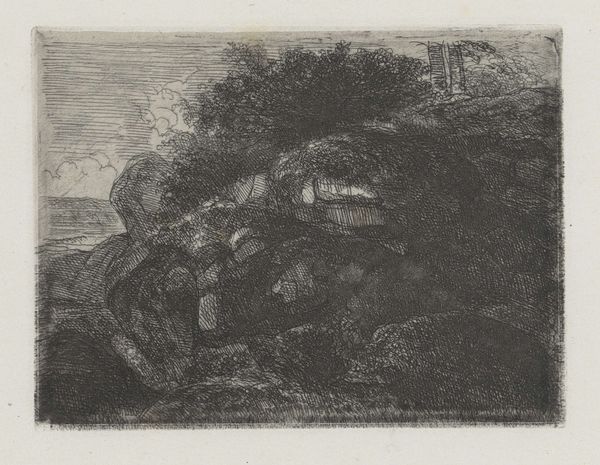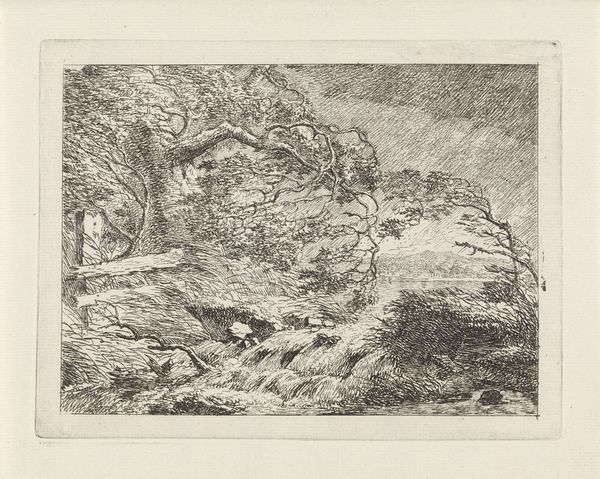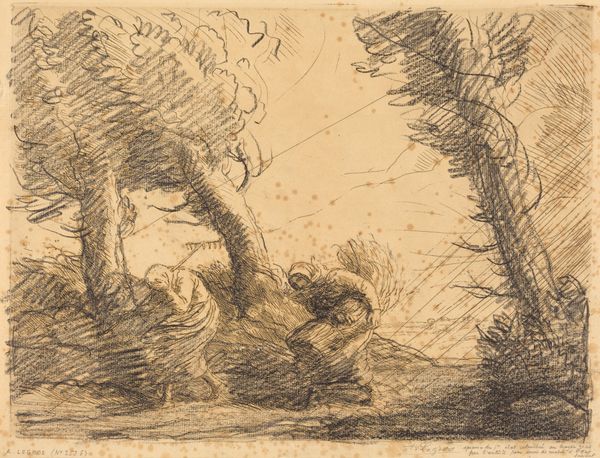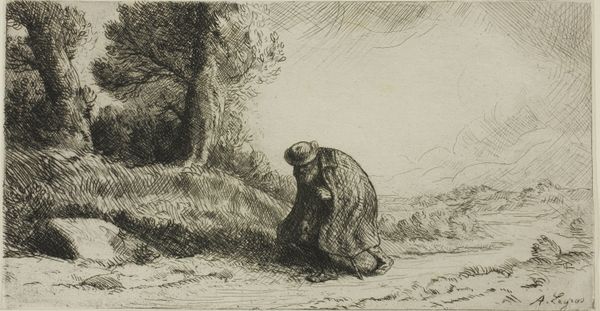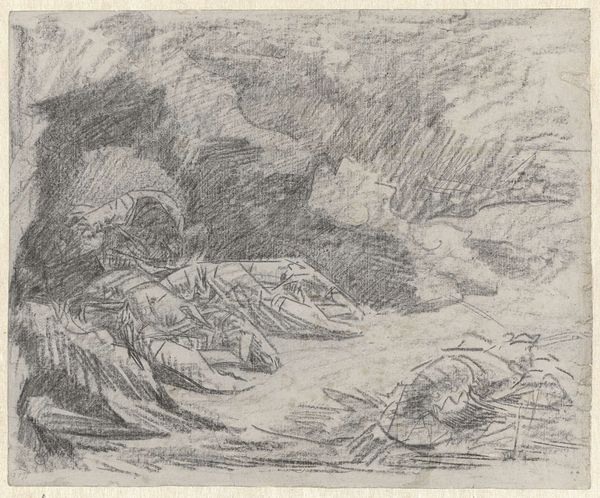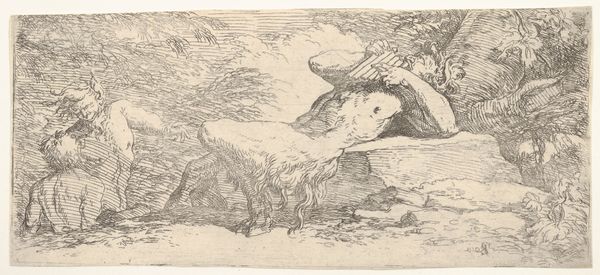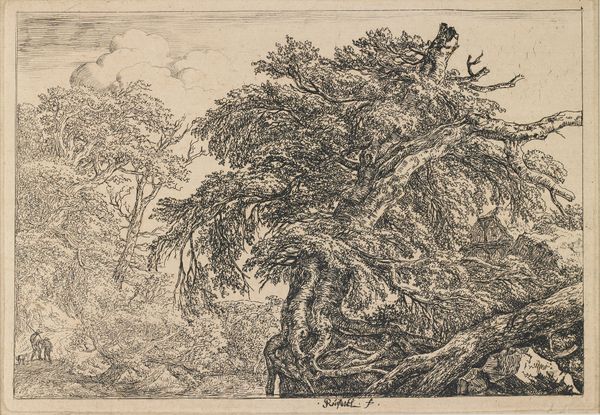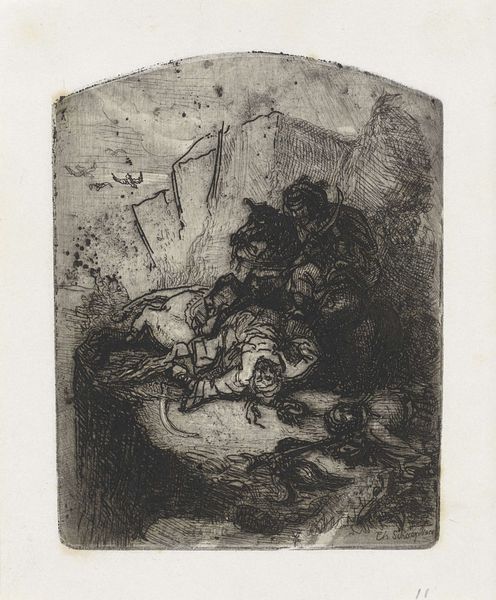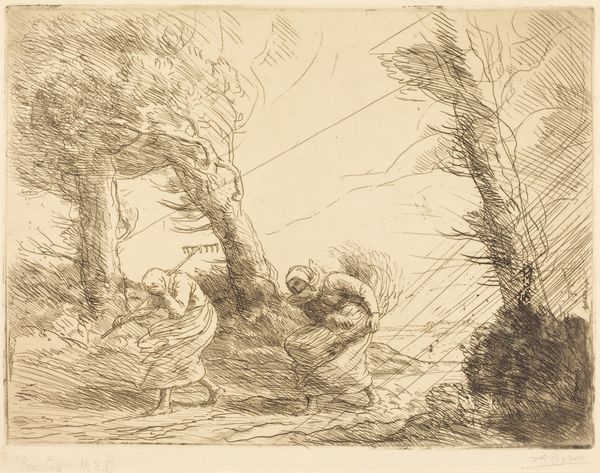
Dimensions: height 89 mm, width 118 mm
Copyright: Rijks Museum: Open Domain
Alexander Schaepkens made this etching, called ‘Rotspartij,’ using metal and acid. The linear quality comes from the etching process: the artist applied a waxy, acid-resistant ground to a metal plate, then drew through it with a needle to expose the metal underneath. Immersing the plate in acid bit away the exposed lines, creating grooves that would hold ink. The more time in the acid bath, the deeper the lines became, and the darker they would appear in the final print. Think of the amount of labor involved: creating the ground, meticulously scratching the image into it, and then carefully inking and printing the plate. The rich blacks and textural effects are a testament to Schaepkens' mastery of this process. Etchings like this offered a way to reproduce images and make them widely available, playing a crucial role in disseminating knowledge and art in the 19th century. Appreciating the labor and artistry involved challenges any strict divide between art and craft.
Comments
No comments
Be the first to comment and join the conversation on the ultimate creative platform.
